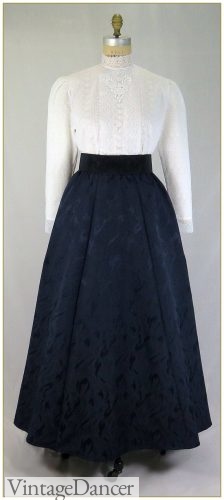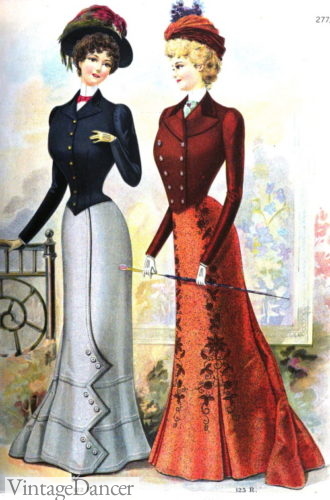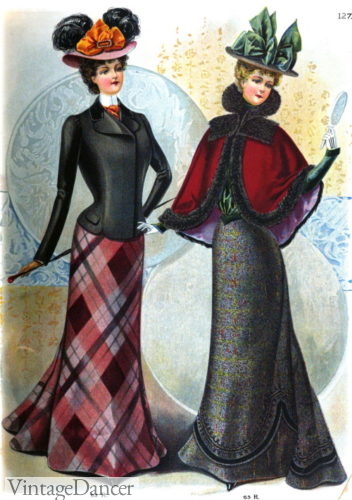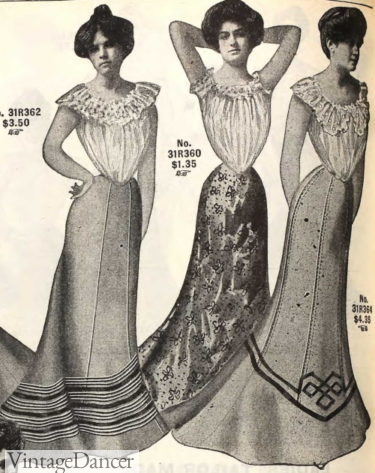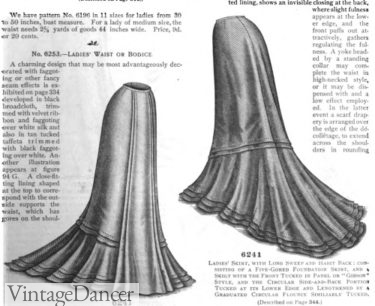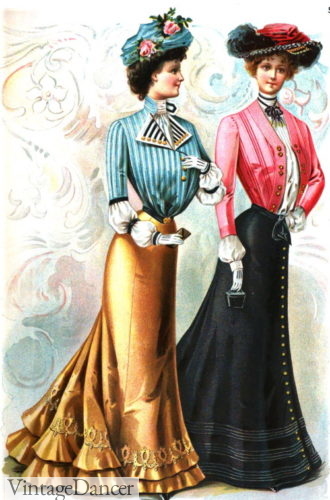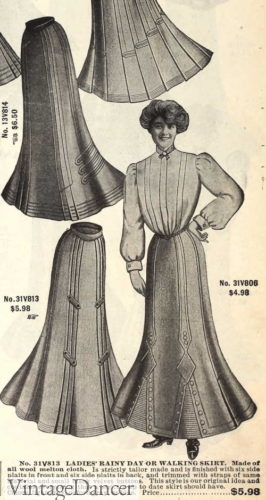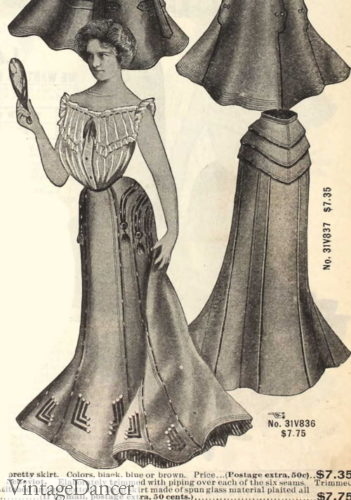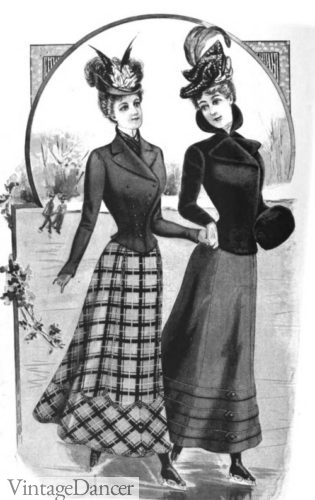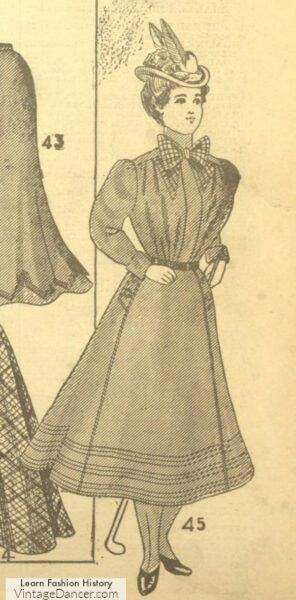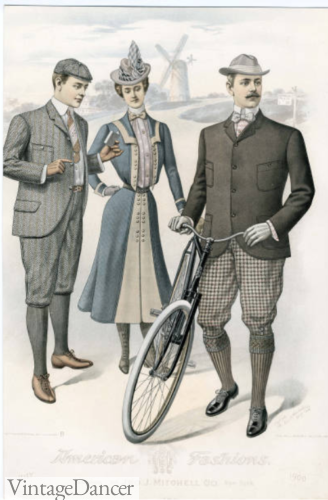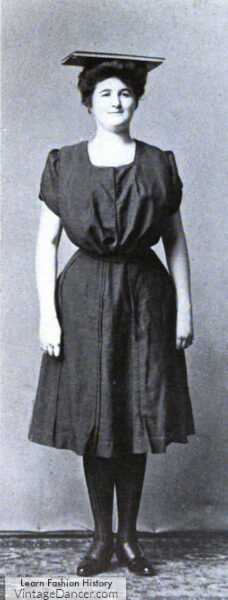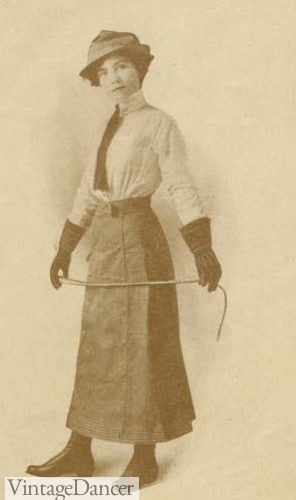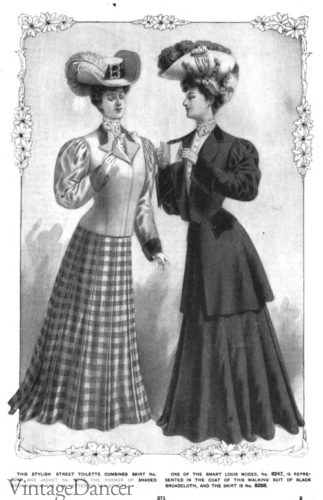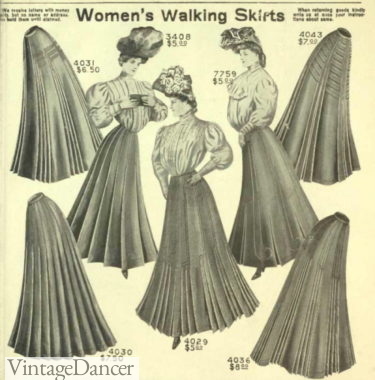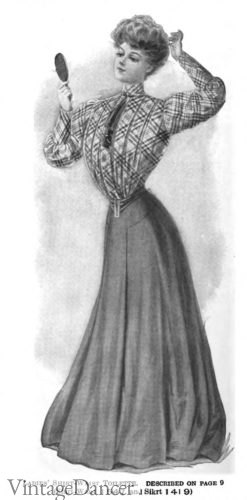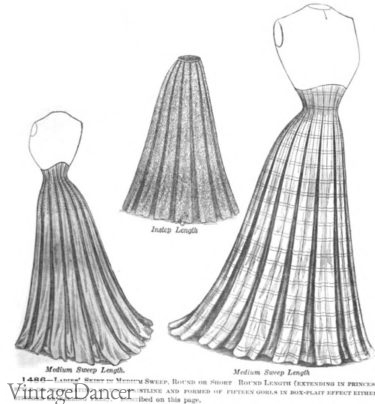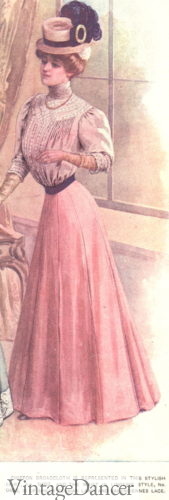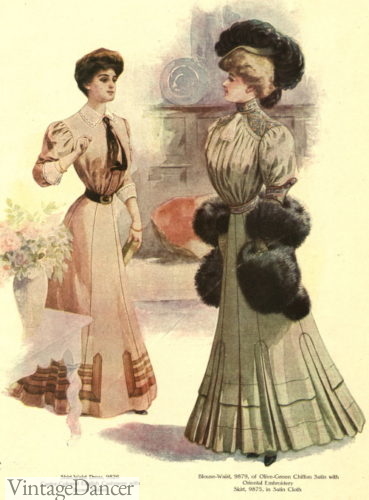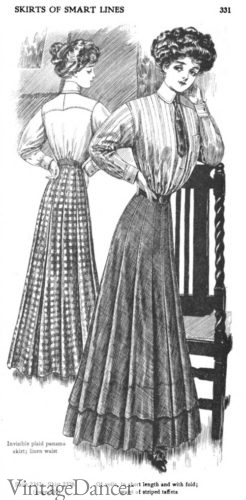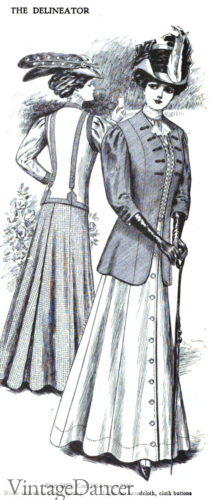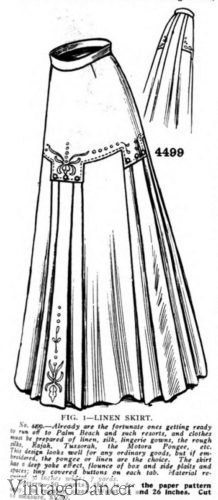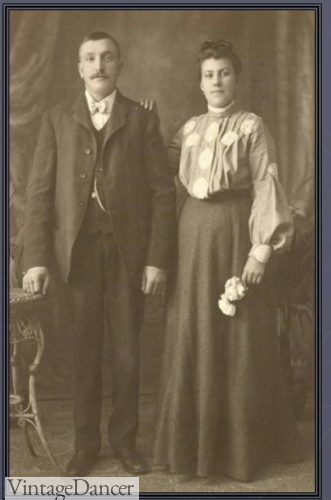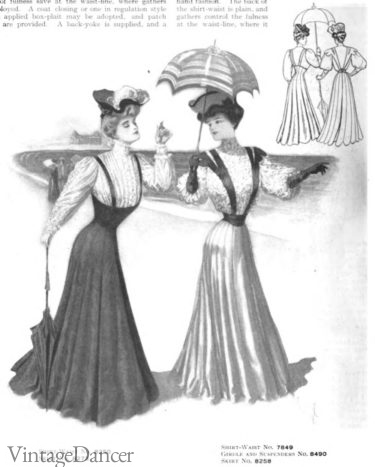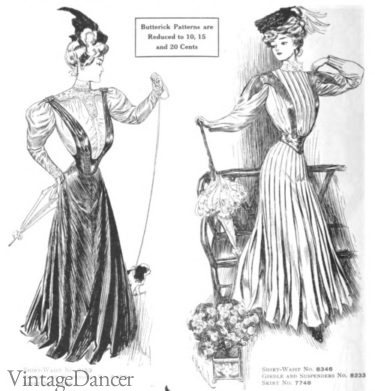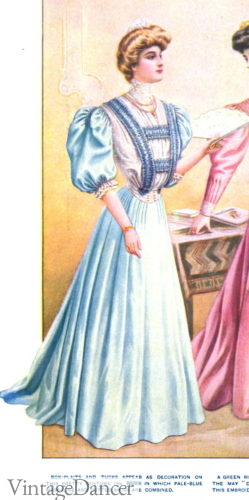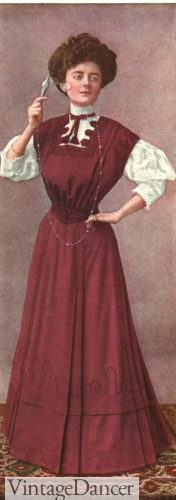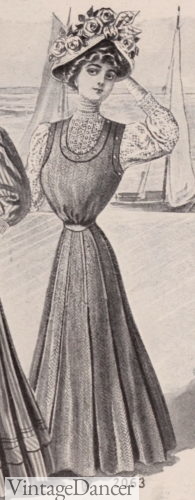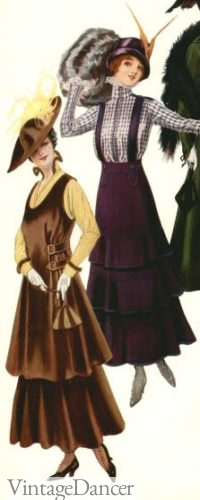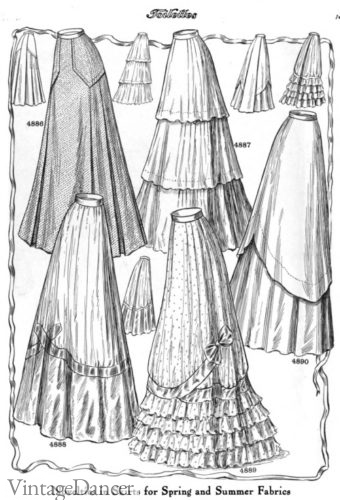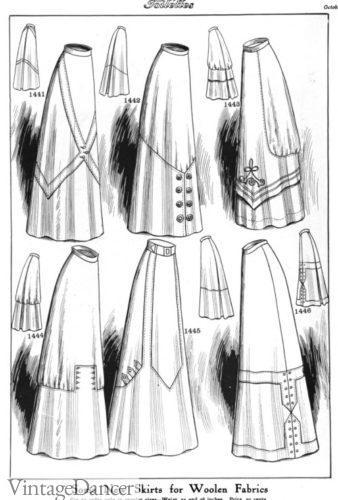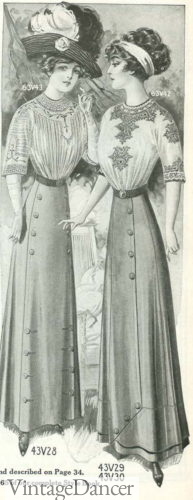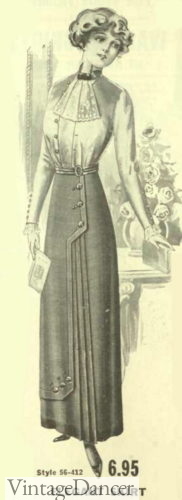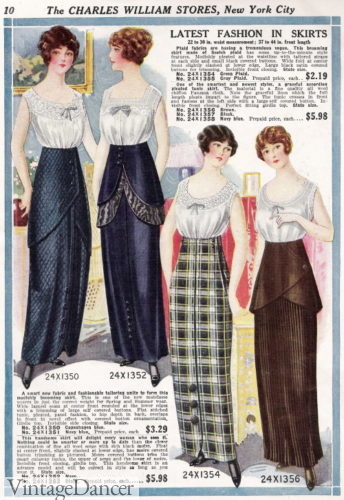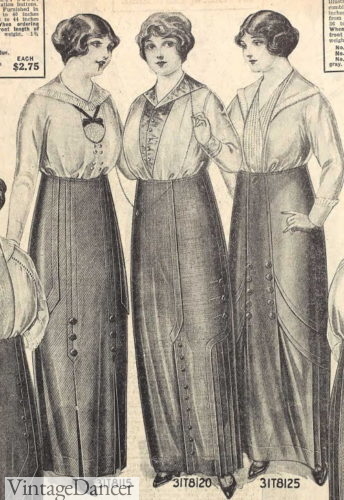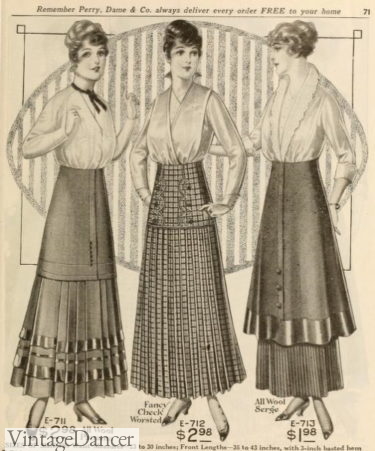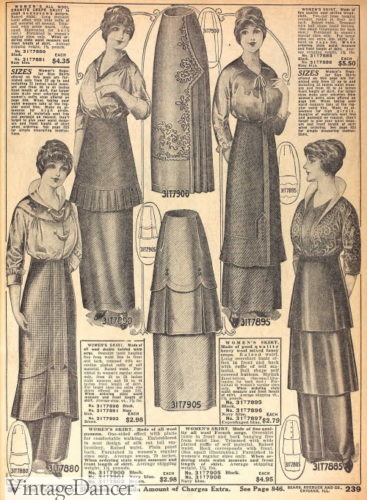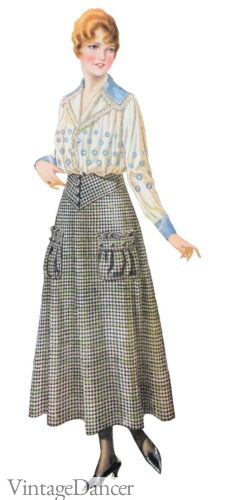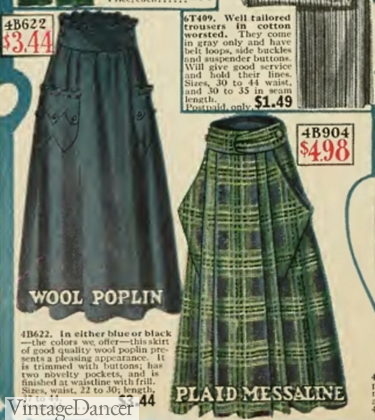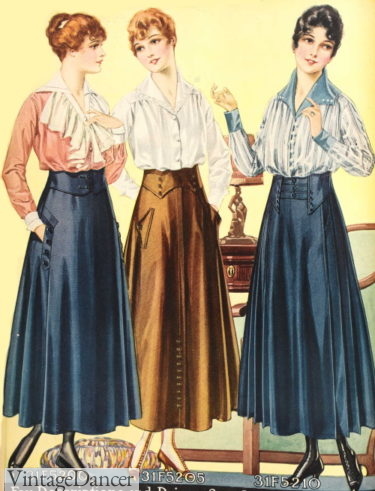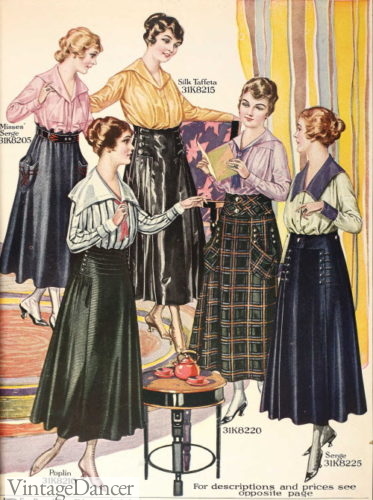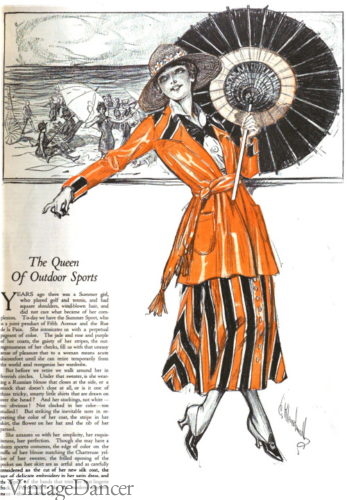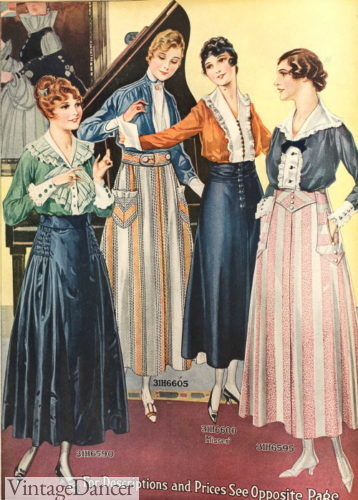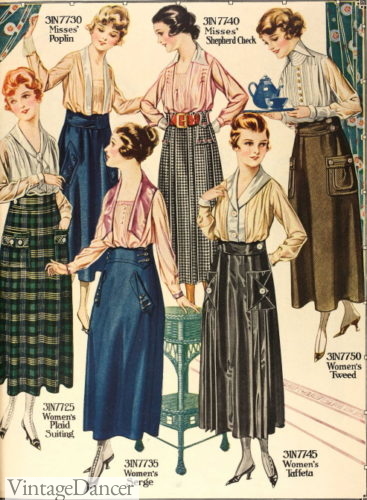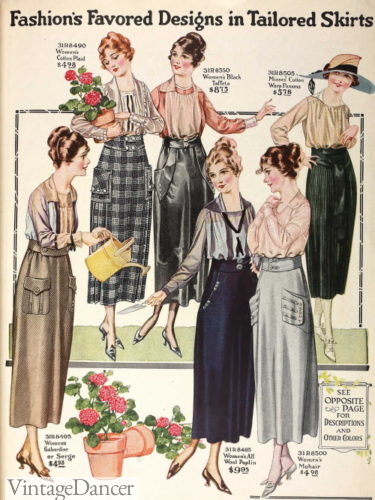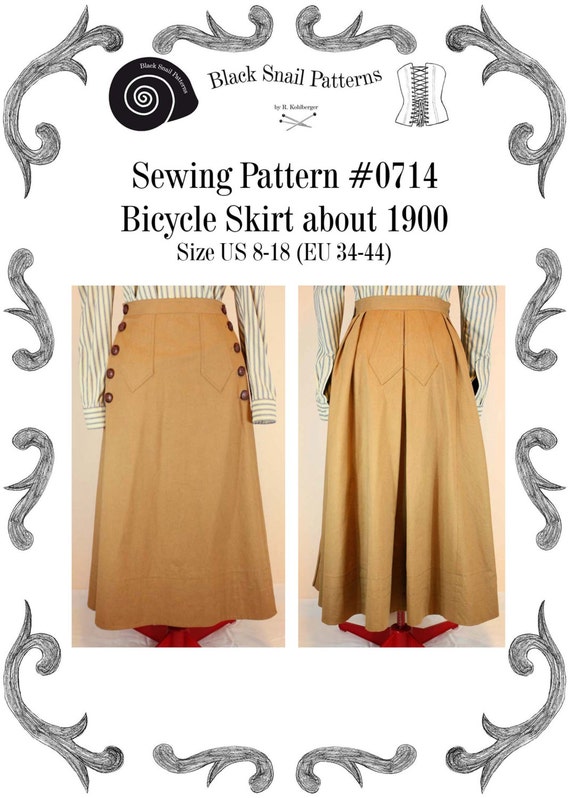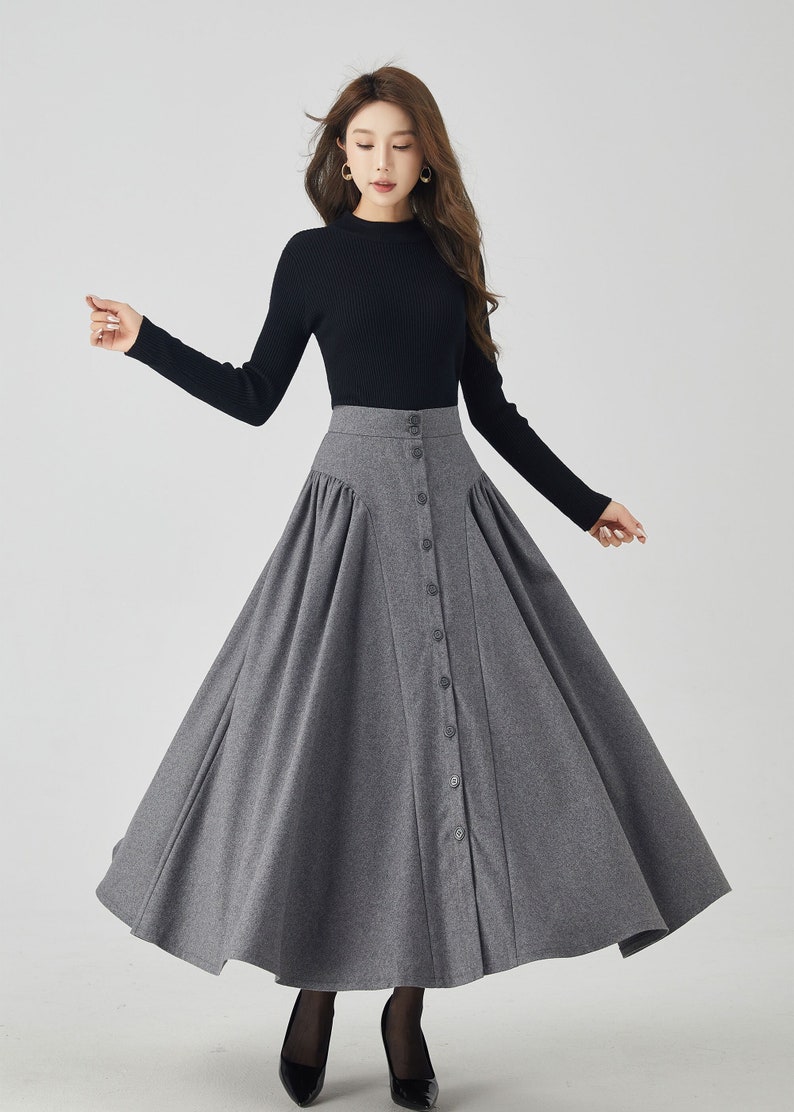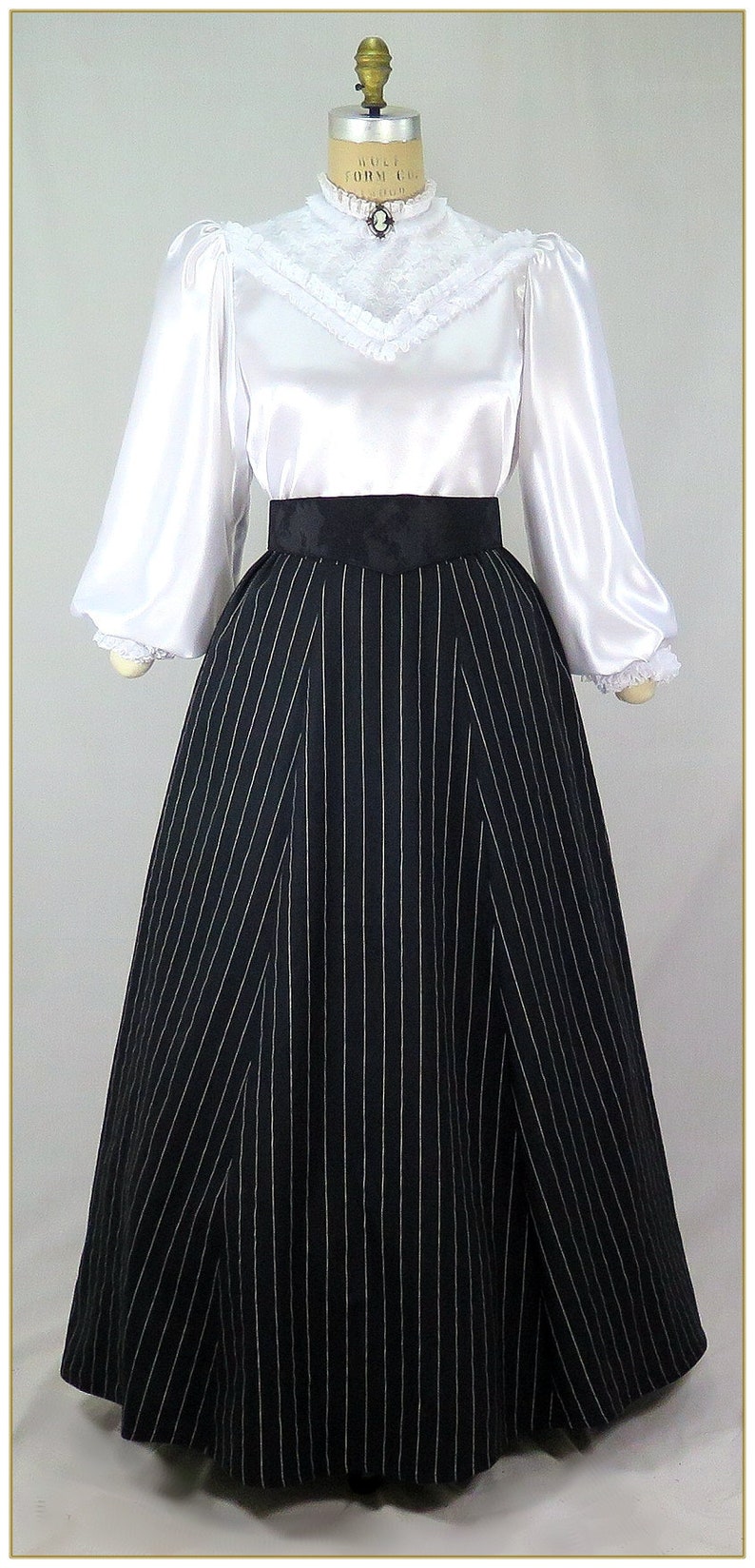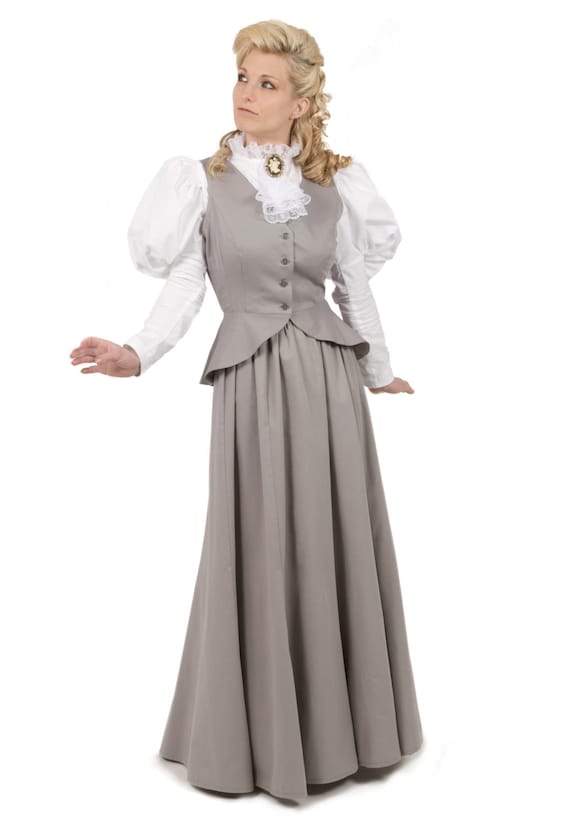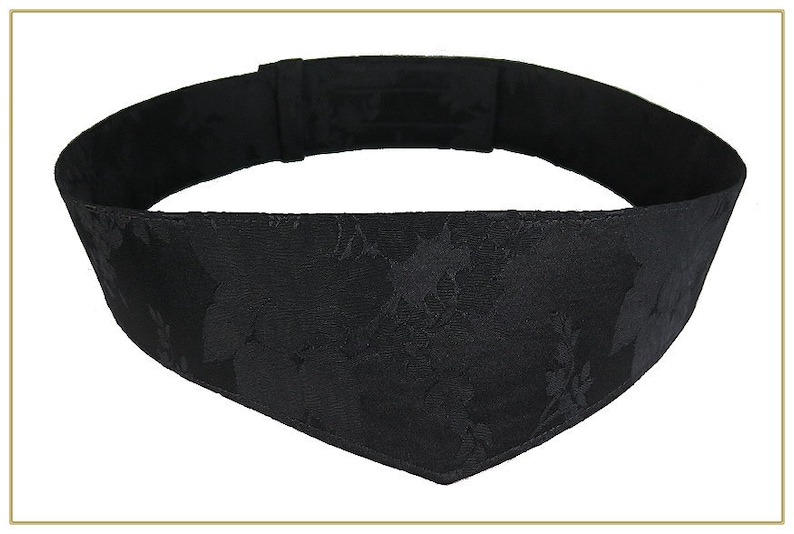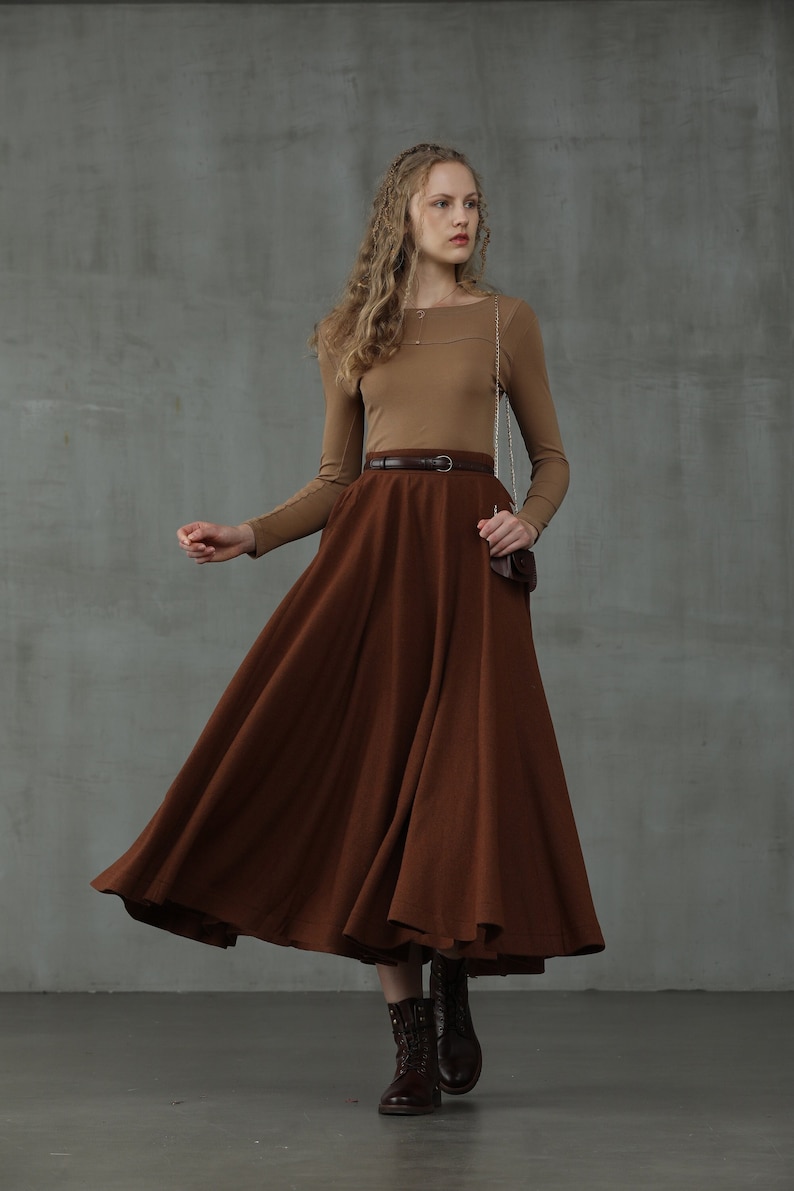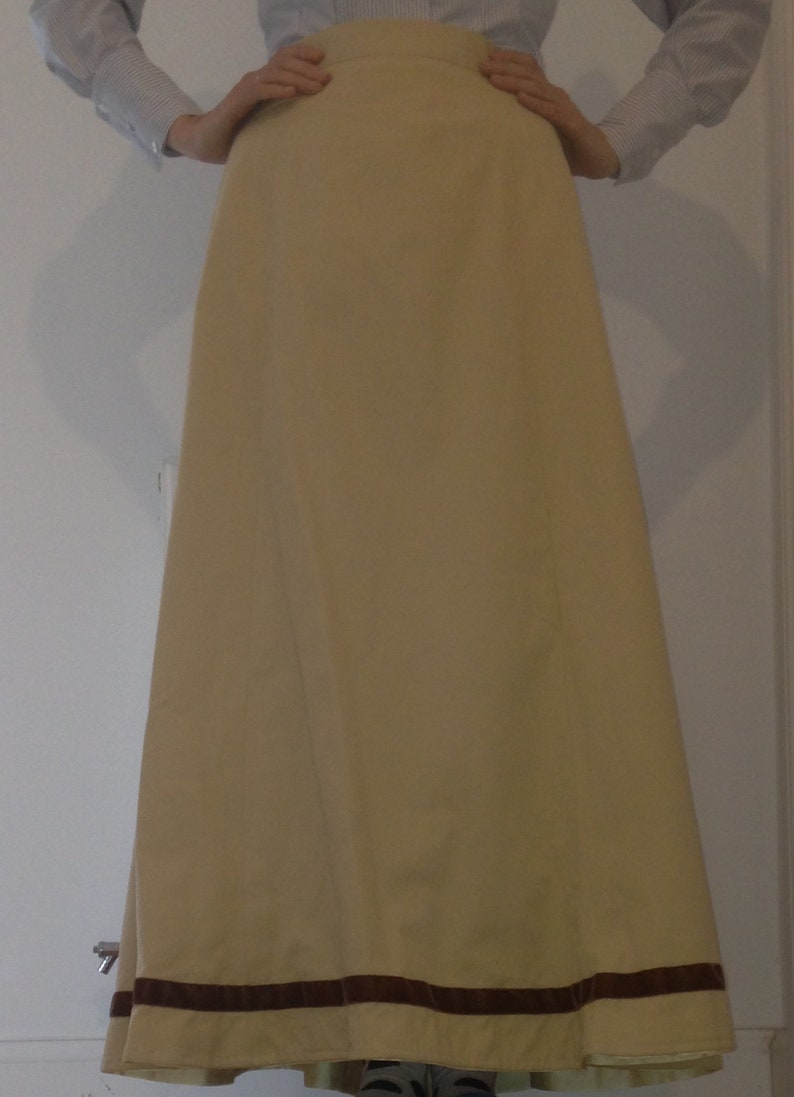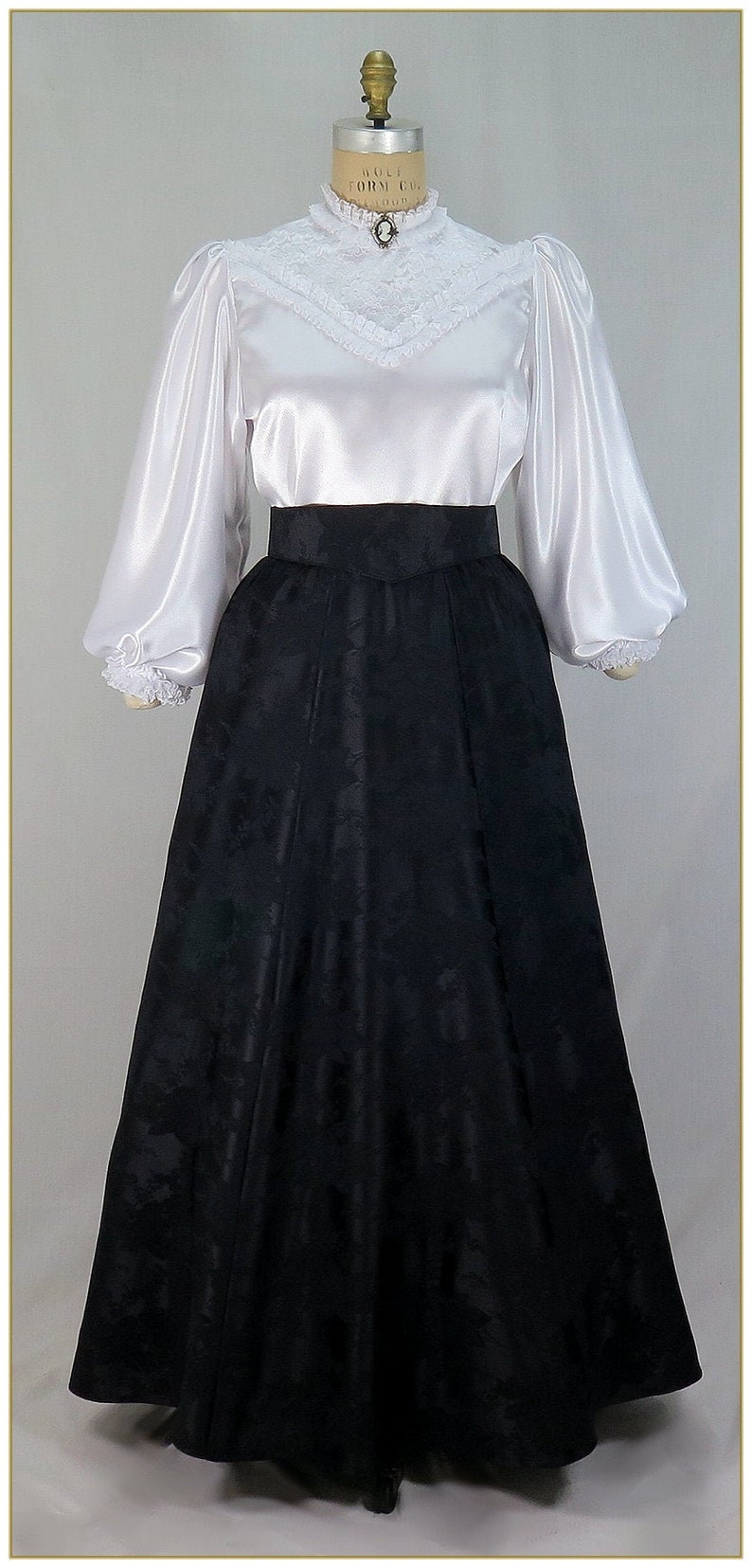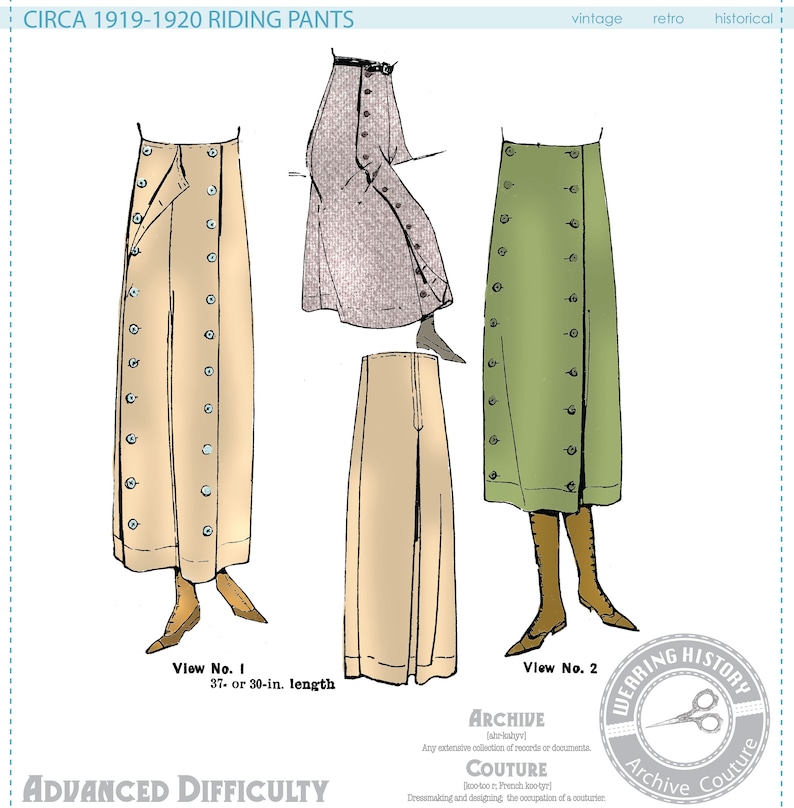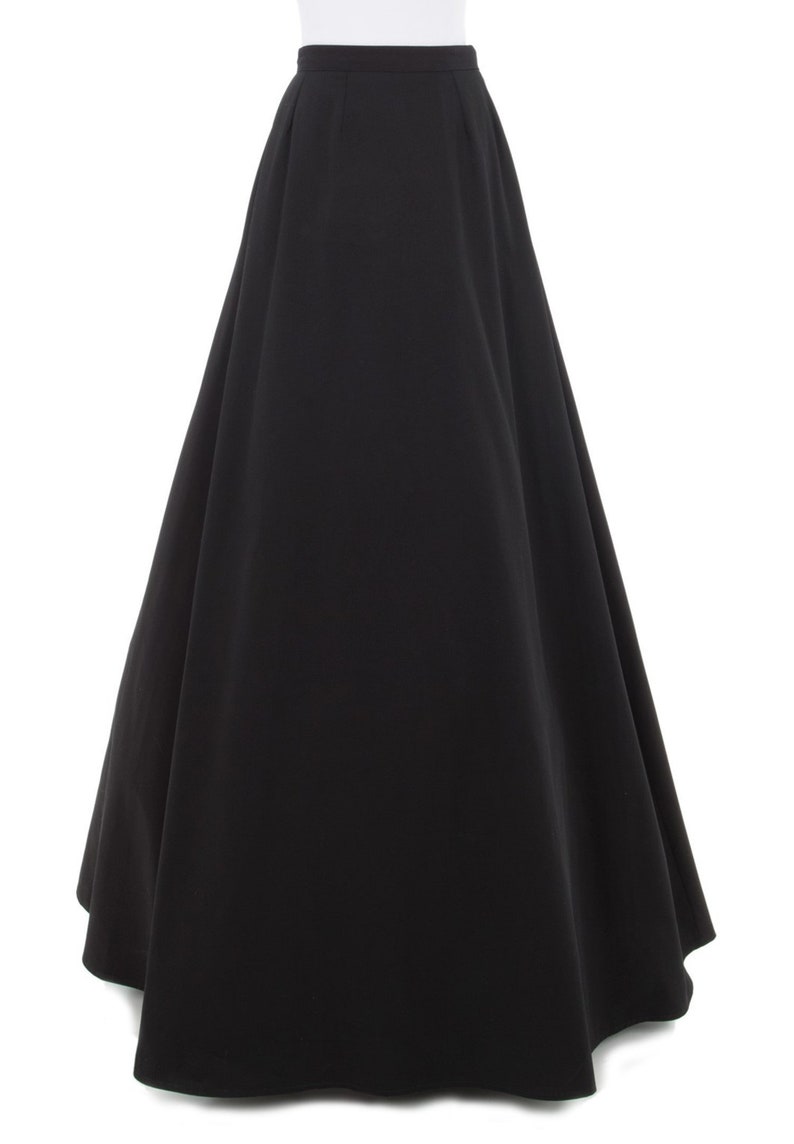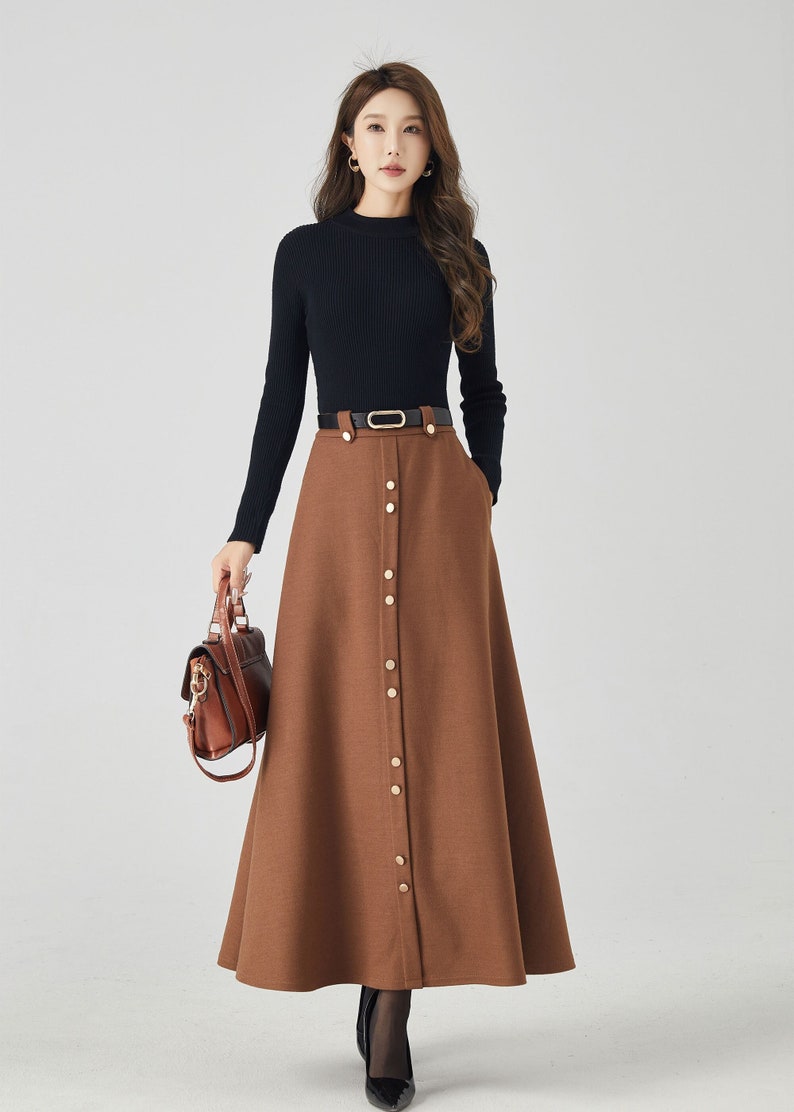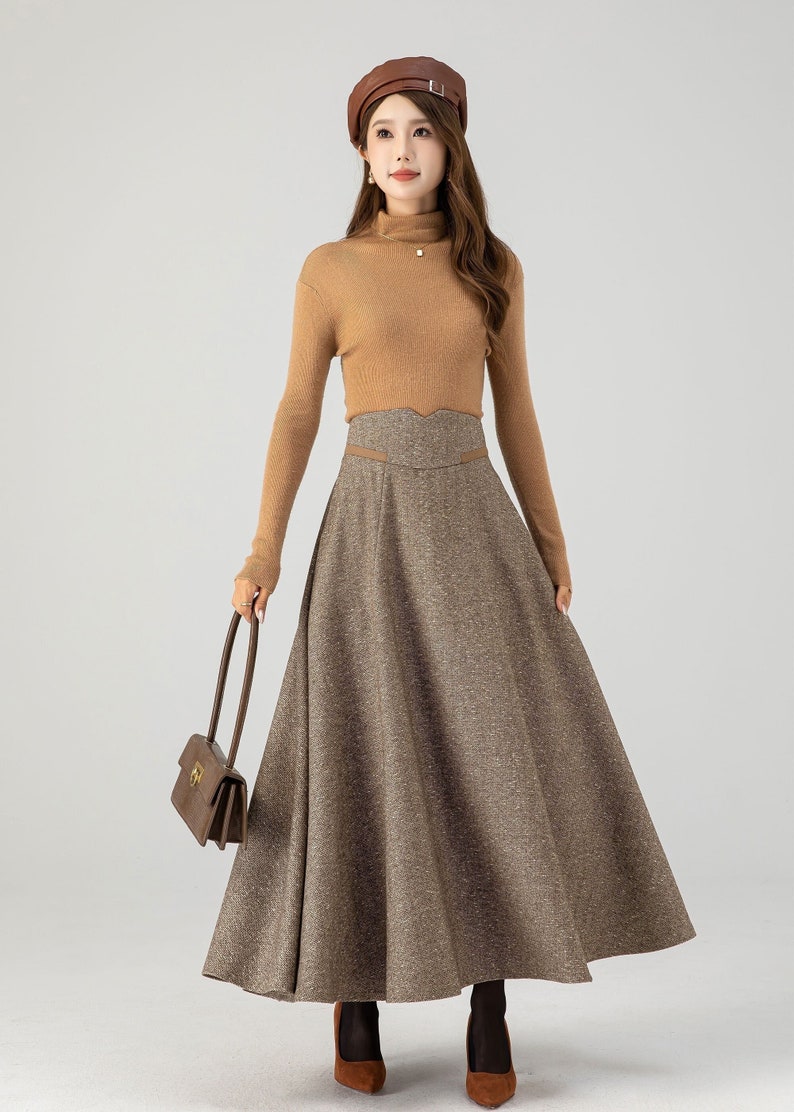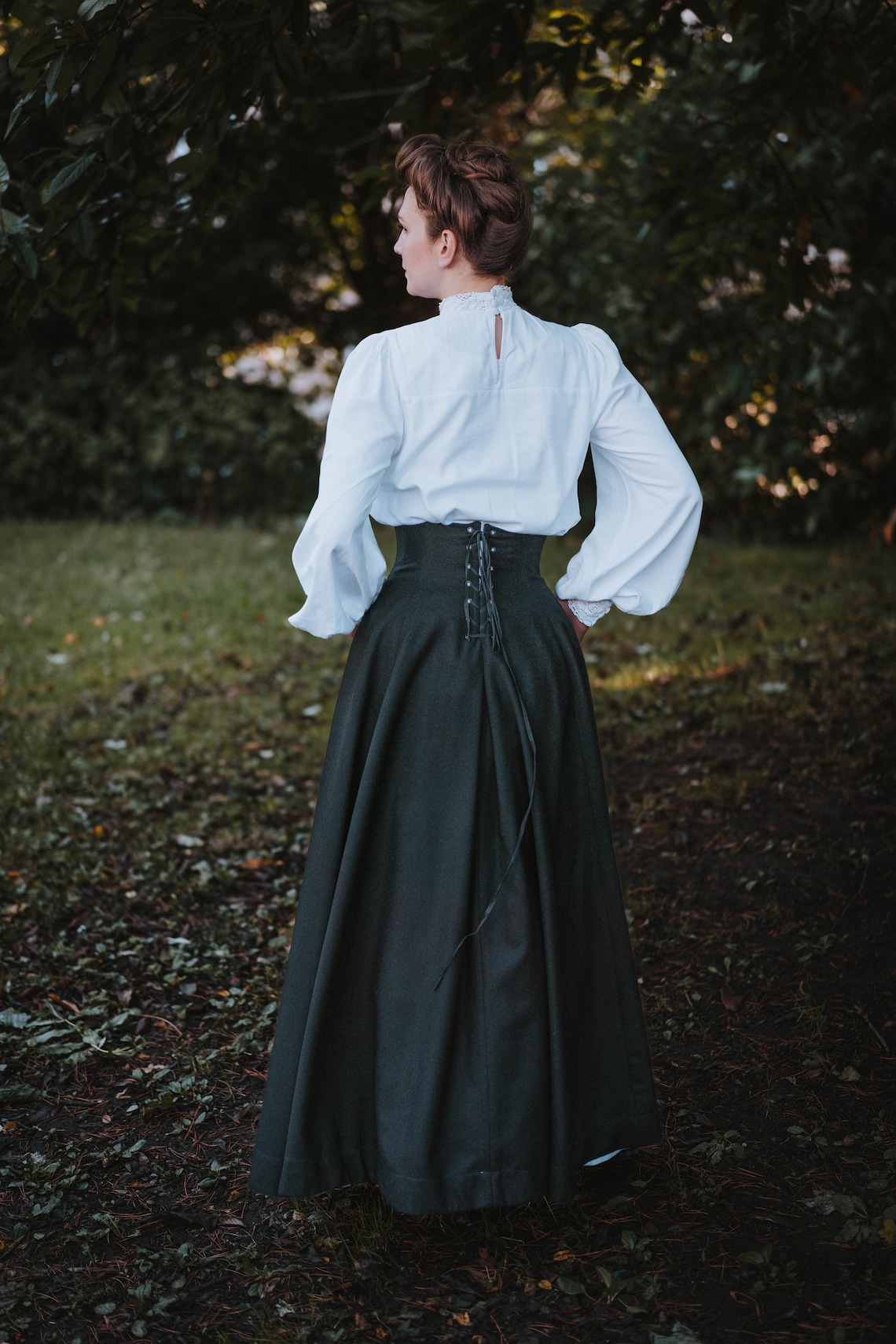Skirt and blouse separates continued to be very popular in the post-Victorian Edwardian era. Worn for both semi-dressy and casual attire, the skirt was a versatile piece to have in one’s wardrobe. For the most part, separate Edwardian skirts followed the same shapes as dress skirts and fabrics for daywear.
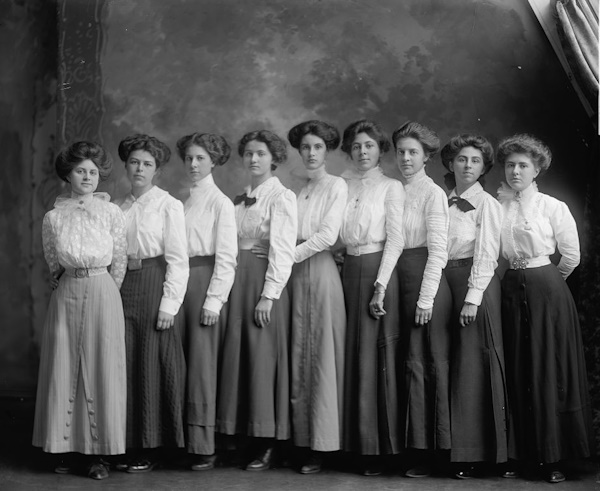
1905 High school teens and skirt and blouse outfits
Wool and silk for fall and winter, lighter cotton and linen for spring and summer. Edwardian skirt fabric names are wool serge, cotton broadcloth, wool voile, wool panama, cotton khaki cloth, cotton corduroy, English mohair wool, and duck cloth.
Plain colors as well as classic patterns of plaid, checks, and occasionally vertical stripes provided variety. Black was the most popular and practical Edwardian dress color. Navy blue, medium grey, dark green as well as white or natural in summer.
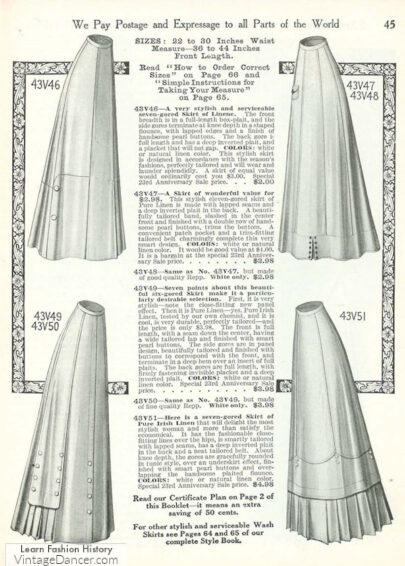
1911 white summer skirts
Edwardian skirt shapes transitioned from narrow, to wide, to narrow, to wide again in a span of 20 years. Let’s explore these transitions in more detail.
Ship the history and shop for Edwardian skirts and patterns
1900 Skirts – The Trumpet or Tulip Edwardian Skirt
At the start of the century, the very full skirt of the 1890s had given way to the narrow Trumpet skirt with a flared hem. The trumpet skirt fit close around the hip and down to the knee where it then flared out from the shin down in 5-7 gores. It was flat in the front with a train in the back for ease of walking. The hem experimented with narrow pleats to add even more fullness.
- 1900 Trumpet Skirts
- 1900 Trumpet Skirts
- 1902 Trumpet Skirts
- 1902 Pleat Hem Trumpet Skirts with Train
The tulip skirt was another name for skirts of this decade, but were less extreme. The Tulip had the same smooth over the hip curve with a gradual flare that began at the thigh and flowed down to a fuller hemline.
Walking skirts often had box pleats or side gathers, to add more volume around the hip for comfort and mobility. The lower classes, working classes, and country women preferred the relaxed tulip and walking skirts over the fussy Trumpet. Real skirts never looked as extreme as illustrations suggested.
- 1901 Tulip Skirts
- 1903 Tulip Walking Skirts
- 1903 Tailored Skirts
- 1900 Skating Skirts
Edwardian Sport Skirts
The shortest Edwardian skirts were made for sportswear. The gym suit or exercise dress as well as golfing skirt rose up the highest at just above the calf. Bicycle skirts were somewhere around mid to low calf and riding skirts were still fairly long, covering the top of the boot.
- 1900 golf skirt
- 1900 Short Skirted Bicycle Outfit
- 1905 gym suit (work out clothes)
- 1910s Divided Skirt Riding Outfit
1904 – Gored and Circular Skirts
The “fit and flare” styling of the first few years faded into the looser gored skirts for the rest of the 1900s. This was the era of the Gibson Girl style.
Between 7 and 11 gores (or more, or less) were the most common for dressy or walking enables. The gores were narrow at the waist and expanded to the floor, creating a very full yet remarkably light skirt. The addition of pleats on the lower half added weight and movement.
In 1905 the circular skirt, cut all in one piece, was the fullest of the skirts at both the waist and hem.
For most of the 1900s and into the 1910s, the full skirt narrowed again around the waist and hip with a gradual wide hem. Having a full /wide hip was made possible by hip pads, bum rolls, and ruffled petticoats, for those women who were not naturally padded.
- 1905 Gored and Circular Walking Skirts
- 1906 Pleated Gored Walking Skirts
- 1905 Skirt with Blouse – Gibson Girl Style
- 1906 Princess Waist Skirts (Corset Style Skirts)
- 1906 Chiffon Broadcloth Afternoon Skirt
- 1907 Outing Skirts and Blouses
- 1908 Practical Skirts
- 1908 Sport Skirt with Button Down Front
- 1910 Linen Skirt
- Blouse and Circular Skirt
Edwardian Jumper Skirt / Pinafore Dress
By 1905, the Jumper or Pinafore worn over a blouse (waist) made its debut. Was it a skirt or a dress? I say it’s a skirt, but history would call them Jumper waist dresses. Initially two straps, like men’s suspenders or braces, connected to the high waisted princess skirt from front to back.
As the years progressed more coverage was added to the straps, making them apron-like by 1908. They came back again during WWI with both narrow straps, V necks, scoop necks, and apron effects.
- 1905 Jumper Dresses / Suspender Skirts for the Seaside
- 1905 Jumper Skirts
- 1905 Jumper Effect Bodice
- 1906 V Jumper Waist Dress
- 1907 Jumper Waist dress
- 1908 Apron Jumper Dress
- 1915 Spring Jumper
- 1915 Fall Jumper Dresses
1909 – The Hobble Skirts
In 1908, designer Poiret introduced a narrow tube or column-shaped skirt with a “hobble garter” around the shins. The Hobble garter never took off, but the Hobble skirt name remained.
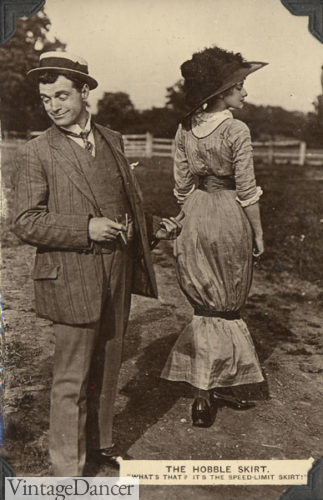
1911- The Hobble skirt with Hobble garter. “What’s that? Its the speed-limit Skirt!”
Both the gored skirt, circular skirt, and hobble skirt styles were sold next to each other in shops and catalogs in the 1910s. For women who choose the hobble skirt, kick pleats hidden in seams and an inverted pleat at the back made it easier to walk and climb stairs. Pleats on the outside became visible and highly decorated with buttons, wrapped layers, soutache trim, and stitched lines.
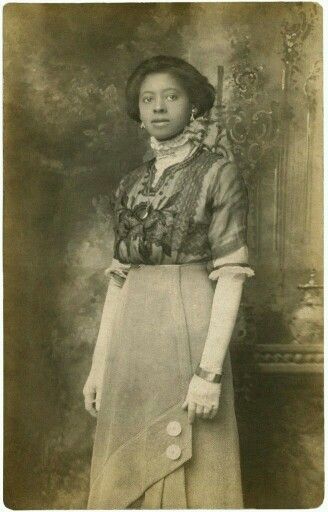
1910s wrapped skirt with buttons
To aid in the column shape effect, skirt waistbands grew higher and higher, up to the ribs in some evening ensembles. The bands, too, became very narrow and then non-existent around 1914.
- 1910 Gored and Circular Skirts
- 1910 New Hobble Skirts
- 1911 Hobble Skirts with Button Details
- 1913 Hobble Skirt with Partial Wrap
- 1914 Hobble Skirts with Chemise Lingerie Tops
- 1914 Plus Size Hobble Skirts
1913 – Draped Skirts
One brief trend for both hobble skirts and gored skirts was the use of over-layers. Short or long overskirts topped underskirts one or two times. The layered or tiered effect added volume without adding bulk to the hemline from 1913-1915 (and earlier in eveningwear).
- 1915 Layered, Tiered, Pleated Mixed Skirts
- 1914 Layered, Tiered Skirts
1915 – WWI A-line Skirts
WWI interrupted fashion’s march to the grand and impractical and returned it back to the days of the bigger skirt, this time with a shorter hemline. Instead of a skirt’s fullness being achieved by many yards or gored fabric, two A-frame pieces were joined at the seams, narrow at the waist and full at the hem.
The A-line skirt with its 3-4 inch shorter hem saved a considerable amount of cash and fabric.
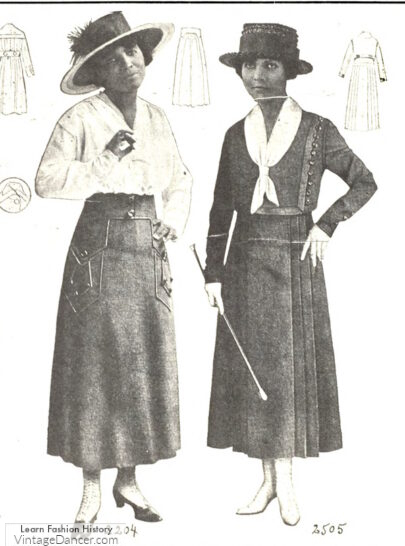
1918 shorter skirts, A-line shape
Excessive trim was spared, too, and instead oversized pockets and wide waistbands miniaturized women into doll-like young girls. The width of the skirt gradually narrowed to a simple and carefree fit by the time the war ended, continuing into the early 1920s.
Experiments in large patterns such as plaid, checks, and vertical stripes as well as bold new colors (pink, orange, green) are my favorite contributions to this fun time period.
Learn more about fashion during WWI and specifically in 1918.
- 1915 Check Skirt with Fancy Pockets
- 1915 Wool Skirts with Large Pockets
- 1916 Plain Wool Skirts
- 1917 Winter Skirts
- 1916 Striped Sport Skirt Outfit
- 1917 Striped Summer Skirts
- 1918 Fall Skirts
- 1919 Skirts – Narrowing Width and Rising Hemline
Edwardian skirts have made various reappearance throughout the 21st century. Today, they are back in style as part of the CottageCore Aesthetic.
Full skirts but with post- WWI hemlines seems to be the style leaders now. You can blend your own modern day Edwardian inspired style with skirts, blouses, aprons and boots.
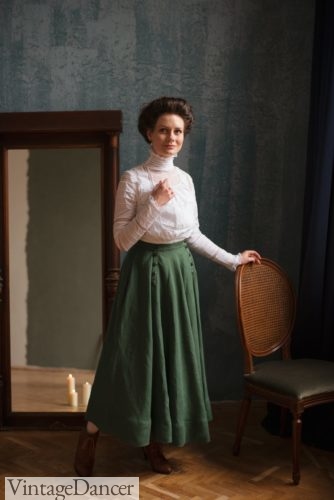
Gibson Girl Dress makes authentic Edwardian clothes
Read More Fashion History
- WWI Civilian Dresses and Clothing
- Fashion in the Year 1918
- Gibson Girl Fashion Era History
- Edwardian Women’s Hats
Edwardian Skirts – Sew or Buy
Before choosing an Edwardian skirt to sew or buy, you would be advised to know your character well — what year, age, location, and social status — in order to choose the correct shape.
Sew an Edwardian era skirt with one of these patterns. Learn about Edwardian colors and fabrics here.
You can also shop for ready-made or made-to-order Edwardian skirts such as these:
Debbie Sessions has been teaching fashion history and helping people dress for vintage themed events since 2009. She has turned a hobby into VintageDancer.com with hundreds of well researched articles and hand picked links to vintage inspired clothing online. She aims to make dressing accurately (or not) an affordable option for all. Oh, and she dances too.
